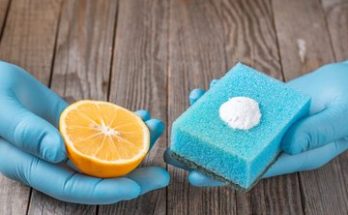Activity 4.1 in the chapter “Acids, Bases, and Salts” is an engaging experiment designed to introduce students to the basic concepts of acids and bases. The primary objective is to understand the acidic or basic nature of various substances using litmus paper as an indicator.
Activity 4.1- Testing with Litmus Paper
Materials Needed
- Lemon juice
- Red and blue litmus paper
- Various substances- Tap water, detergent solution, aerated drink, soap solution, shampoo, common salt solution, sugar solution, vinegar, baking soda solution, milk of magnesia, washing soda solution, and lime water
- Distilled water (to make solutions, if necessary)
Class 7 – Chapter 4- Acids, Bases, and Salts- An Overview of Activities
Procedure

- Preparing the Test Solution-
- Mix a small quantity of lemon juice with an equal amount of water in a plastic cup or test tube. This diluted lemon juice will serve as your test solution.
- Litmus Paper Test-
- Dip a strip of red litmus paper into the test solution. Observe and note any colour change.
- Repeat the process using a strip of blue litmus paper.
- Extending the Activity-
- Prepare similar dilutions for other substances mentioned.
- Test each solution with red and blue litmus paper.
- Record any colour changes observed.
Also Check – Indicators for Acid and Base- A Guide for Students
Conceptual Understanding
- Litmus Test-
- Litmus paper is a simple indicator that turns red in acidic solutions and blue in basic solutions. The original colour of the paper (red or blue) will change depending on the nature of the solution it is dipped into.
- Acids and Bases-
- Substances like lemon juice, vinegar, and aerated drinks often turn blue litmus red, indicating they are acidic.
- Conversely, substances like soap solution, baking soda solution, and milk of magnesia typically turn red litmus blue, indicating they are basic.
- Neutral Solutions-
- Some substances may not induce any colour change in either of the litmus papers. These are neutral solutions, indicating they are neither acidic nor basic. Common salt solution and sugar solution are typical examples of neutral solutions.
- Observing and Recording-
- Students are encouraged to record their observations in a tabulated format. This helps in understanding which substances are acidic, basic, or neutral based on the colour change of litmus paper.
- Safety Note-
- While handling substances, especially detergents and cleaning agents, students should be careful and possibly seek adult supervision.
Learning Outcomes
- Identifying Acids and Bases– Students learn to identify acidic, basic, and neutral substances using a simple litmus test.
- Concept of pH- This activity introduces the concept of pH, which measures the acidity or basicity of a solution.
- Real-life Applications- Understanding the nature of common household substances helps students relate chemistry concepts to their everyday life.
Conclusion
Activity 4.1 is a foundational experiment that introduces students to the intriguing world of acids, bases, and salts. By observing the colour change in litmus paper when dipped in various solutions, students can categorise substances into acids, bases, or neutrals. This activity not only builds the foundation for understanding chemical properties but also encourages observational skills and scientific thinking. As they perform this activity, students step into the world of chemistry where colour changes can reveal the hidden nature of the substances around us.
Also Check- Young Explorer’s Guide to Acids and Bases
Also Chekc – Rapid Revision – Class 7 Science – Chapter 5-Acids, Bases and Salts
Also Check – NCERT Exemplar Solutions- Class 7 Science Chapter – 5- Acids, Bases and Salts
Also Check – NCERT Solutions For Class 7 Science Chapter 5 – Acids, Bases and Salts
Also Check – Class 7- Chapter 4 – Acids, Bases and Salts – 4 Worksheets Solved and Unsolved
Class 7 science -Chapter 5-Acids, Bases and Salts – Definition and Explanation of Important Keywords
Also Check -Class 7 science -Chapter 5-Acids, Bases and Salts- Complete Notes
